Isometrics: Bodybuilding’s “Cheat Code”
by Paul "Coach" Wade
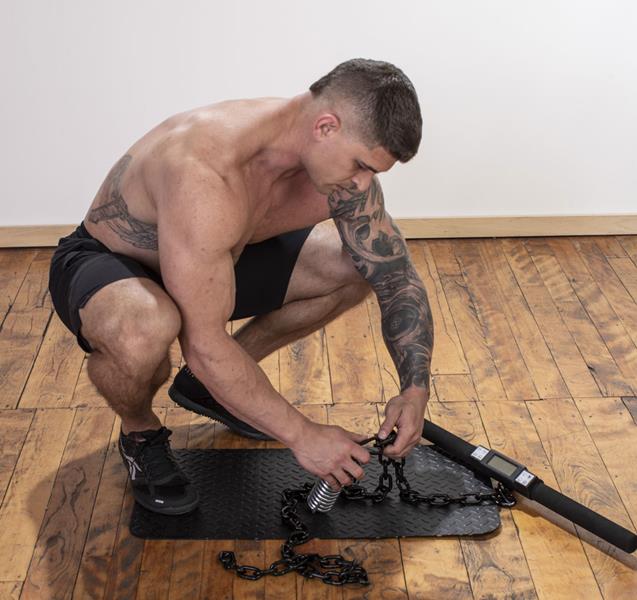
Ah—isometrics! Strength training without movement. It’s a method championed through the decades by all serious sports scientists and researchers. Many of the great modern-day strength coaches are passionate advocates for isometrics: Louie Simmons, Pavel Tsatsouline, Christian Thibaudeau, Ross Enamait, and on and on. If you think isos are snake oil, these names should give you pause. All these men promote isometric training.
And yet—very few athletes seem consistently use this method, or reap its benefits.
![]()
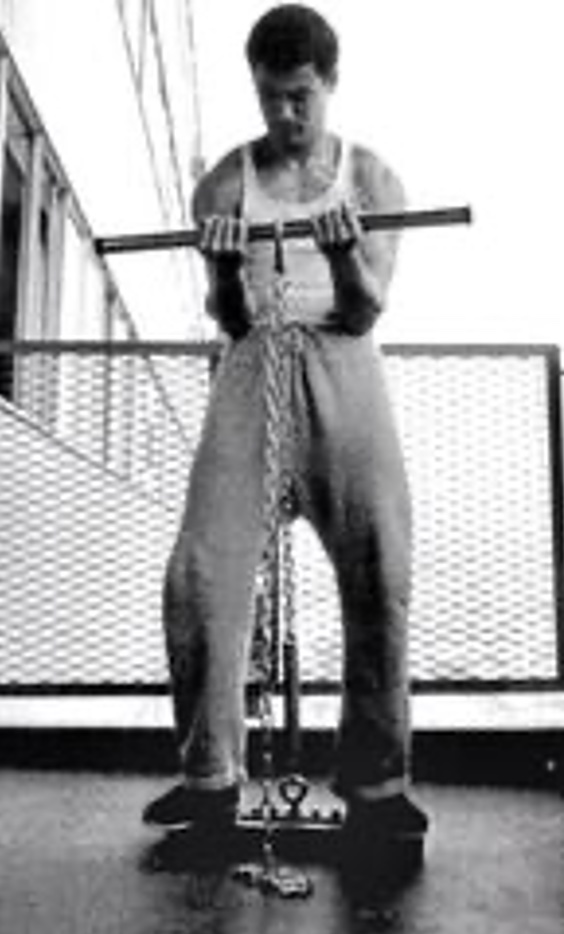
Maybe that’s the case today, but let me tell you, back in the sixties, god damn: everyone was using it. It was the fitness craze
du jour. Joe Weider was selling isometric devices by the metric ton.
Businessmen and housewives were performing iso workouts in the office or the kitchen. Top sports teams were using isometrics. Olympic weightlifters were practically nuts for isos. (Little-known fact: Bob Hoffman invented the first power rack
not as a safety system, but as an isometric device.)
Many track athletes and martial artists were utilizing isometrics, heavily. The approach was featured several times in
Sports Illustrated. Bruce Lee was a great champion of the method. In fact, you may have seen photos of Bruce using a chain-and-bar device.
Chain-and-bar isos involve a footplate (or wooden base) attached to a chain, a spring, and a bar. The athlete stands on the plate and pulls or pushes the bar, just like a barbell—but isometrically. Chains are cheaper and more convenient than using overloaded barbells in a power rack, and the addition of a heavy-duty tension spring on the chain mimics a "live" load. This makes chain work a massive improvement over traditional static-state methods—pushing on trees, walls, doorframes—because these approaches don’t allow you to overcome cortical inhibition. Your nervous system knows when there’s load there, and unlocks muscle fibers accordingly. Athletes who used chain-and-bar devices said they could
feel themselves getting stronger—on a daily basis.
Old bastards like me who can remember some of this were sure isometrics were gonna be the training method of the future. Then, seemingly overnight, isometrics passed out of training culture.
…
Why?
The major argument against isometrics has always been the lack of
measurement. How much force are you using? Even if you are pushing a barbell against pins in a rack—you might know what’s on the
bar, but how much force is going into the
pins? Nobody knows. Sadly, without knowing how much you are lifting, progressive overload is difficult if not impossible. So is establishing progress.
This problem was solved in the sixties by the addition of a simple dynamometer to chain-and-bar devices. The major issue here was that you couldn’t see the meter during training, so you needed someone to call out the numbers. This was why the team at Dragon Door invented the
ISOCHAIN—the first-ever isometric chain-and-bar device with a digital readout display in the handle.
Let’s bring this type of training back. You and me. You don’t need an ISOCHAIN to benefit from simple chain-and-bar work. You can buy the components—steel plate, heavy-duty spring, metal bar, chain, carabiners—for a few dollars from almost any hardware store and build one yourself, old-school style. This is exactly what elite weightlifters and martial artists used to do.
So maybe now you’re thinking—hell, I’m a bodybuilder, not a weightlifter or a martial artist. Why should I use isometrics?
You want a reason, kid? Just one? Shoot, I like your damn face. I’ll give ya
ten.
1. Isos build slabs of jacked-up muscle
We all love muscle so I’m gonna slip this sucker in here first.
There used to be an old gym-myth that isometrics make you strong as all get-out, but without adding beef. Turns out this myth is just that—crap.
When physiologists were first able to study muscle growth properly using computerized tomography they found that isometrics not only build muscle—if you use ‘em right—they build muscle just as well as conventional bodybuilding methods.[1] (As an added bonus, isos increased muscle hardness even better than regular lifting.) Multiple studies have confirmed without a doubt that isometrics build muscle very effectively.
…Why are isos so damn effective for bodybuilding?
One factor which is definitely central to optimal hypertrophy is time-under-tension. Isometric training is the ultimate time-under-tension method. This isn’t anecdote or opinion—it’s just simple math.
Imagine a barbell curl; the hardest (and most productive) point of the barbell curl is when the forearms are at 90 degrees, parallel to the floor. But this ideal angle only lasts for a split second; during a set of curls, the tension in the biceps is constantly going up and down, like a sine wave. At some points—the top and bottom of the exercise—muscular tension drops almost to zero. Compare this with an isometric curl; maximum tension can be held, at any angle, and throughout the entire exercise. Time-under-tension is 100%!
![]()
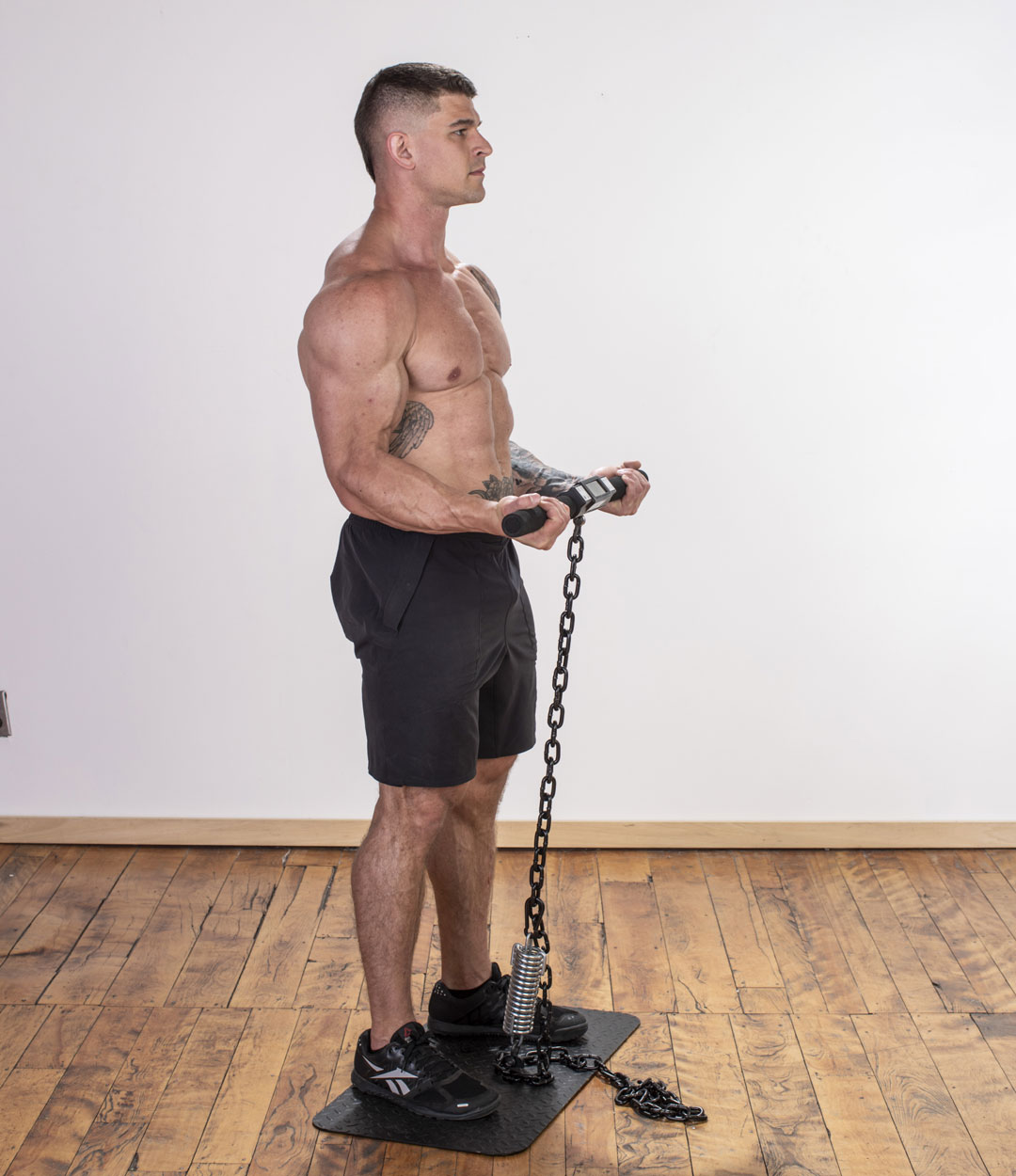
For this reason, isometric exercise increases intramuscular pressure for extended periods. This pressure occludes circulation and results in anoxia (oxygen deficiency) inside the muscles. This anoxia, in turn, powerfully stimulates the synthesis of new actin and myosin in the muscle cells, to help them survive.[2] The result is bigger muscles.
Want a new technique to get jacked? Stop moving.
2. Nothing builds strength as rapidly as heavy isometrics
For muscle-building you can get by with time-under-tension techniques using moderate weights. But if you want to get stronger than the next dude—
in a hurry—you need to use heavy loads. There’s no way round this. The heavier the loads you can use, safely, the closer you can get to your maximum strength potential.
Isometrics allows you to utilize heavier loads than conventional resistance training methods. This is due to a physiological law called the
Force-Velocity Relationship. In short, this law says that we can only move light loads rapidly. The heavier the load gets, the slower we must move.
The moment your muscles are lifting the highest possible load they can, they stop moving. As soon as that happens, you are doing isometrics.[3]
![]()
Isometrics allow you to handle heavier loads than any form of conventional lifting.
Unsurprisingly, the biology behind this means that isometrics allow athletes to recruit more muscle during training. How much? 50%? 75%? Amazingly, isos allow you to recruit nearly 100% of your muscle cells. No other form of strength training can match this.[4]
Even the earliest studies of isometrics showed enormous strength gains—of up to 5% per week.[5] Imagine doubling your strength in 20 weeks! It can be done, and has been done using isometrics.
And in case you’re thinking—yeah, but this highfalutin isometric strength is only good when you’re not moving. It doesn’t translate into real world, dynamic strength—well, let me stop you there, Charlie Brown. The science proves that it does. Muscles that get stronger isometrically, get stronger when moving. Fact.[6]
3. Isometrics protect the joints, and heal old injuries
Unfortunately, we all know that slinging heavy iron over the years can cause wear and tear on the joints. It can also result in injuries, both chronic and acute. Serious heavy lifters just accept this as part of the "game". If you’re a long-term lifter, you’re probably nodding your head right now. If you love the heavy stuff but care about your joints and want to be lifting into old age, isos are definitely a strength discipline you should explore.
Isometrics have far less injury potential than dynamic exercises (which is why physiotherapists and other clinicians lean on isometrics as rehabilitation).[7] There are multiple reasons for this, based on Davis’s Law. Firstly, injuries are often caused when soft tissues are exposed to external forces they can’t handle; but in isometrics, all forces are autoregulated—the athlete’s own nervous system determines the load it can handle. Momentum, movement speed changes and muscles lengthening under load are also big factors in causing injuries. In isometrics there is zero momentum and zero lengthening. Isometrics—even isometrics using huge loads—are statistically enormously safe.
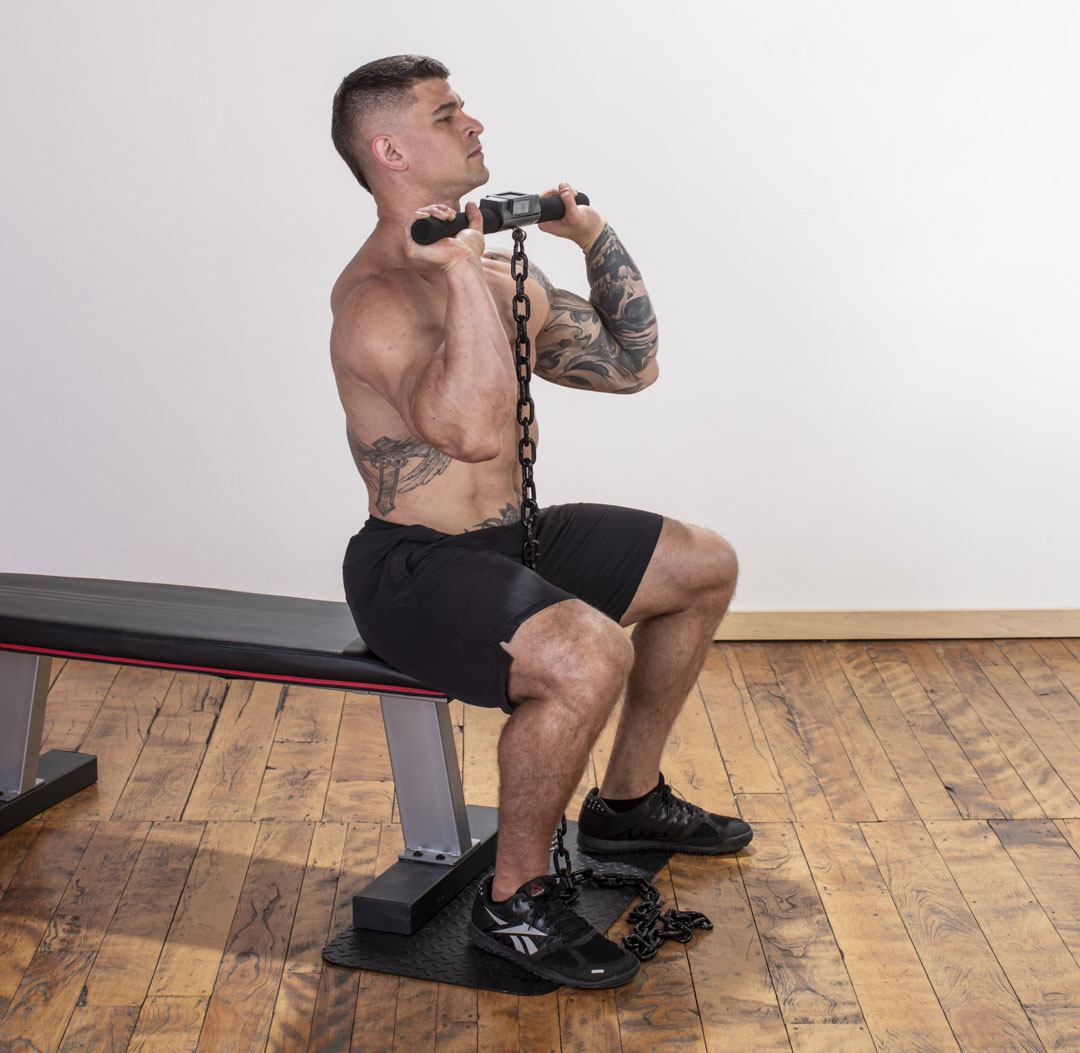
Isometric training even has the power to heal old injuries. Our joints hurt when we lift heavy due to internal abrasion—friction between soft tissues, which are typically compromised by old age or former injuries. During isometrics there is no movement, so there is zero internal abrasion: no friction, grinding, crunching or irritation—none. Many athletes who can’t squat or press in the gym any more have found they can squat and press isometrically—with no pain, and even heavier than before.
In fact, far from causing pain, heavy isometrics actually relieve pain—rapidly, and better than analgesic drugs.[8] If they are feeling stiff or sore, many of my athletes perform isometrics for a short while, and the pain just vanishes.
4. Isometrics: the ultimate bullet-proofing method
Isometrics is a brutal mistress. Serious
isometric training, even for a short period, will illuminate your weak points like a laser beam. This is due to a principle of physiology called
Sherrington’s Law of Irradiation.
Sherrington’s Law of Irradiation states that the more force a muscle exerts, the more surrounding muscles are activated, to assist in the generation of power. For moderate forces, neighboring muscles are called in; the higher the force, the more distant muscles are recruited. Isometrics allows athletes to use the highest forces possible, as safely as possible. These loads force the entire body to work as a unit, under Sherrington’s Law.
The take-home of this: isometrics work the whole body as a
system. If any muscle group is weak, stiff or imbalanced, isometrics will tell you. Then, isometrics will fix it—rapidly. If you wish to make progress in isometrics, you must learn how to tense and brace your entire body; feet, legs, core, shoulder girdle, everything. During every single session you mentally and neurologically learn how to iron out weak links. This is why Soviet coaches considered isometrics a short-cut to learning advanced level total-body strength skills. These skills are what separate elite-tier lifters from the rest of us. They’re not only the key to next-level strength, they’re also the finest way to bulletproof the body against contact injuries.[9]
These abilities translate into every day, functional strength. Don’t believe that old fairy tale that isometrics only strengthen muscles at the angle you use them. This idea was disproved long ago by ergonomic models[10], and numerous experimental studies have challenged the concept of angular specificity.[11, 12, 13] Strength differentials at divergent angles are the product of
leverage, not muscle activity.[14] Muscle cells follow the All-or-None law—they either contract, or they don’t. They don’t understand "angles".
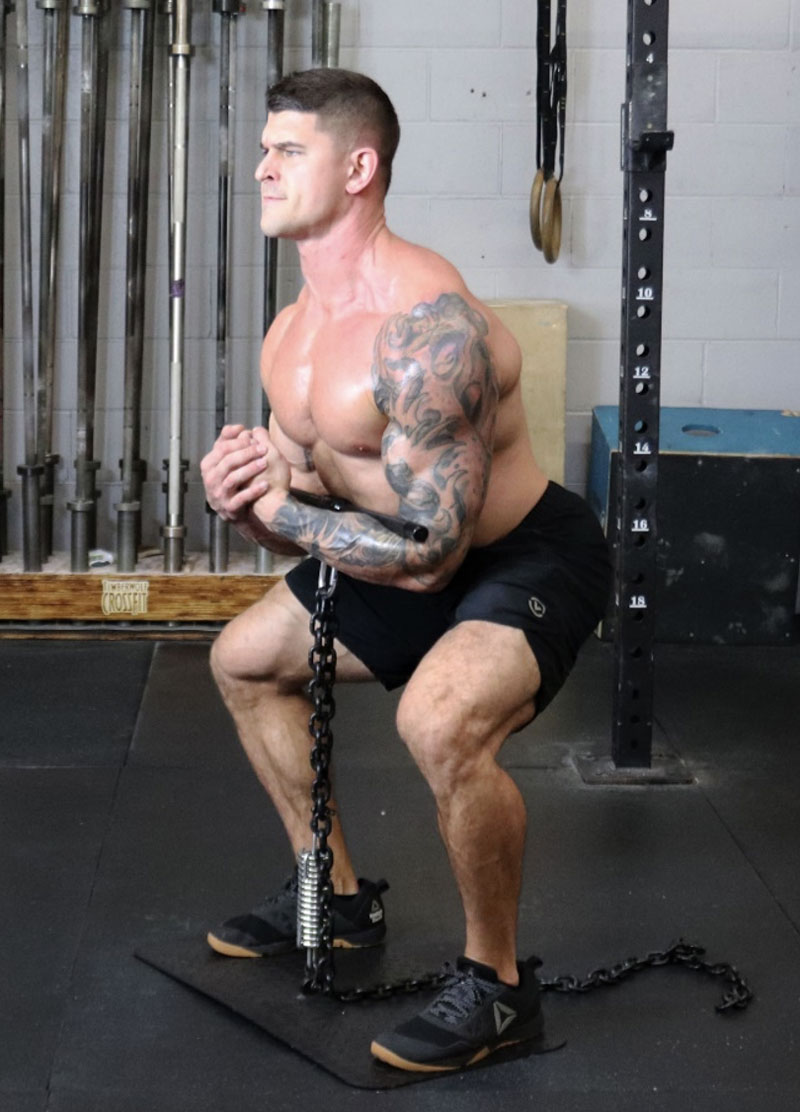
Even if this weren’t true, a huge amount of "functional" strength is isometric anyway. Look at something as fundamental as picking up a weight—your spinal muscles fire isometrically; your core fires isometrically; your upper-back and shoulder stabilizers fire isometrically; your grip is isometric; even the muscles of the feet work isometrically.
Isometric strength is real strength. Without isometric strength, there is no dynamic strength—you have nothing.
5. Isometrics—"yoga" for the cardiovascular system
If you want to get flexible for life, you could do a lot worse than devoting some time to yoga. But what should you do if you want to improve your lifelong
cardiovascular health? Your heart strength, vascular functioning, blood pressure?
The answer is, you should be
exploring isometrics. One of my students calls isos
yoga for the cardiovascular system, for this very reason.
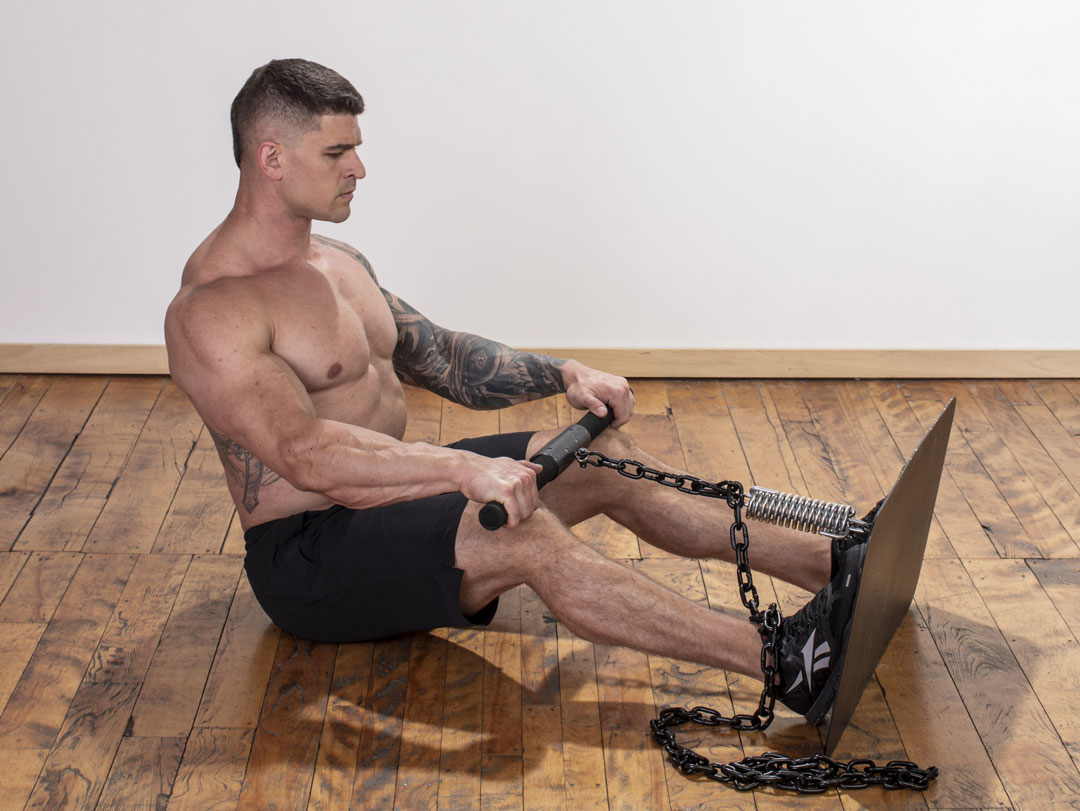
Previous generations of doctors and coaches assumed that isometric training was bad for individuals with high blood pressure, purely due to the fact that your blood pressure rises during isometric training. (In fact, the same belief was originally held about all resistance training.)
But hold yer horses there, Tex. As soon as scientists began to seriously study this area, they found something remarkable: that not only does isometric exercise reduce high blood pressure, it does so just as well, or better, than medication.[15] In one study, individuals performing isometric exercises three times per week over eight weeks saw their systolic pressure drop by 12.5 points, and their diastolic plunge by a huge 14.9 points—that’s nearly two points per week, a potentially life-saving drop.[16] More recent studies have noted significant BP drops after as little as four weeks.[17]
The dramatic effect of isos on hypertension is so profound that some cutting-edge researchers recommend isometric exercise as an anti-hypertensive therapy.[18]
What’s going on?
The answer has to do with a physiological phenomenon we could call the isometric effect. When you tense your muscles hard, and hold them that way—as in isos—the expanded muscles mechanically squeeze the veins and blood vessels running through them, like a vice. This constriction places the circulatory system under stress; as a result, it adapts—blood vessels quickly become stronger, more supple, and altogether more youthful.
This constriction also forces the heart to pump harder to maintain blood flow, making it healthier and more powerful; an improvement better than that seen from traditional, aerobic-type cardiovascular exercise.[19]
In fact, isometrics are so damn good for circulatory health throughout the entire body, that researchers are now exploring them as a therapy to help combat Alzheimer’s Disease.[20]
This isometrics stuff is good for you, kids. Really good!
6. Isometrics torch body fat
Jesus, now you’re going to tell me that not moving burns fat?
Yep!
It used to be assumed that isos were useless for fat loss. You’re not moving, right? How can that burn fat? But when the dudes in lab coats actually bothered to study it, they got a helluva shock.
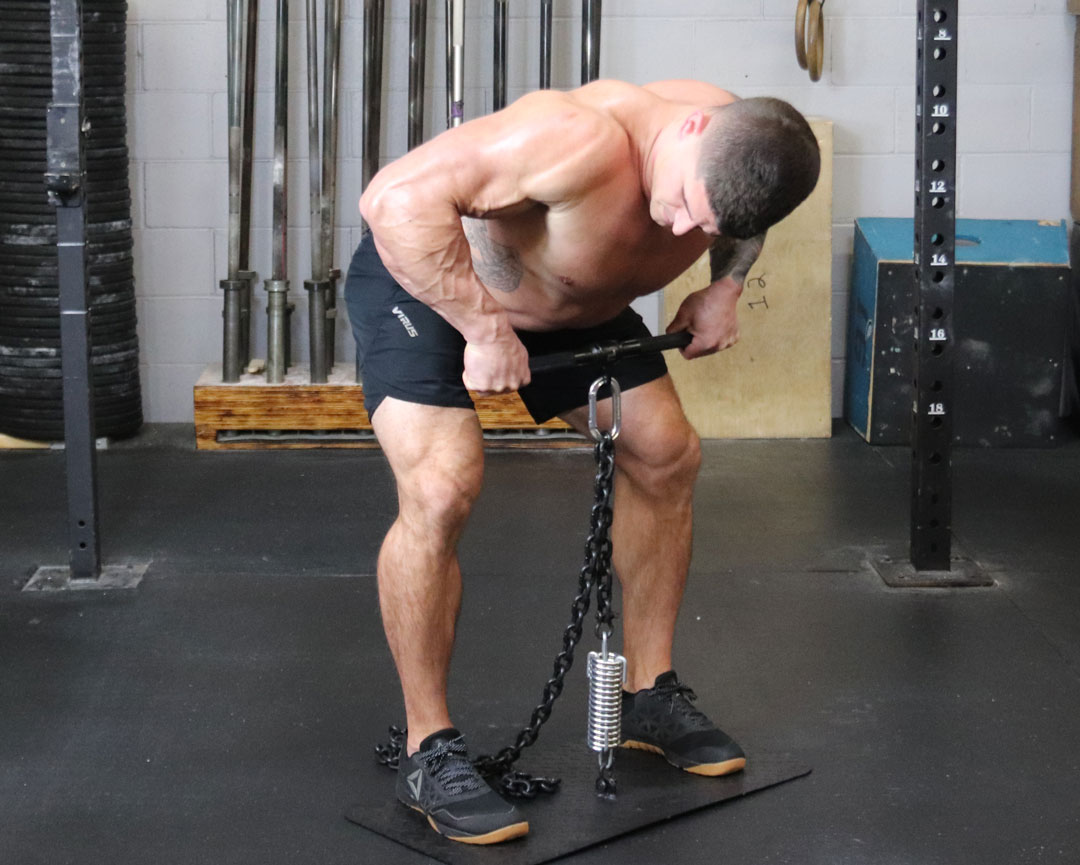
A comprehensive study published in The Journal of Applied Research demonstrated once and for all the benefits of isometric training as a fat-loss weapon. It showed subjects reducing enough belly size in the first two weeks of isometric training to drop one dress/pant size; by four weeks, some subjects had lost over 22 lbs in weight. They did this while increasing strength by 20% (with only seven minutes training per day). Subjects were eating a normal, healthy diet, with no starvation involved. The team of researchers also noted an average drop in the iso group’s cholesterol of 14% in just four weeks—enough to significantly lower the risk of heart disease.[21]
Of course, it doesn’t hurt that isometric exercise adds muscle mass: muscle is active tissue, which burns calories all day and night, whether you’re training, jerking off or watching Columbo re-runs. Or all three, in my case.
7. Isometrics make you fast and explosive
Okay, this Wade punk is going too damn far with this one, right here. Surely isometrics make you slower, right?
In fact, researchers have understood that isometrics increase speed for the better part of a century. The reason is simple: isometrics make you stronger, and there is a proportional relationship between strength and speed. Strength is the production of force. Newton’s second law tells us that acceleration = Force x Mass. No force, no acceleration. A weak athlete is a slow athlete.
That’s the physics, but the biology behind this is also understood. Your fast-twitch muscle fibers adapt according to
Henneman’s Size Principle. This physiological law states that larger fibers—the fast-twitch ones—are only recruited (and trained) according to
load—not speed. You need high loads to train fast-twitch fibers. Isometric training involves higher loads than speed training, or regular weight-lifting. As a result,
isometrics powerfully tap into the fast-twitch fibers. Isometrics make you fast, even though you’re not moving.
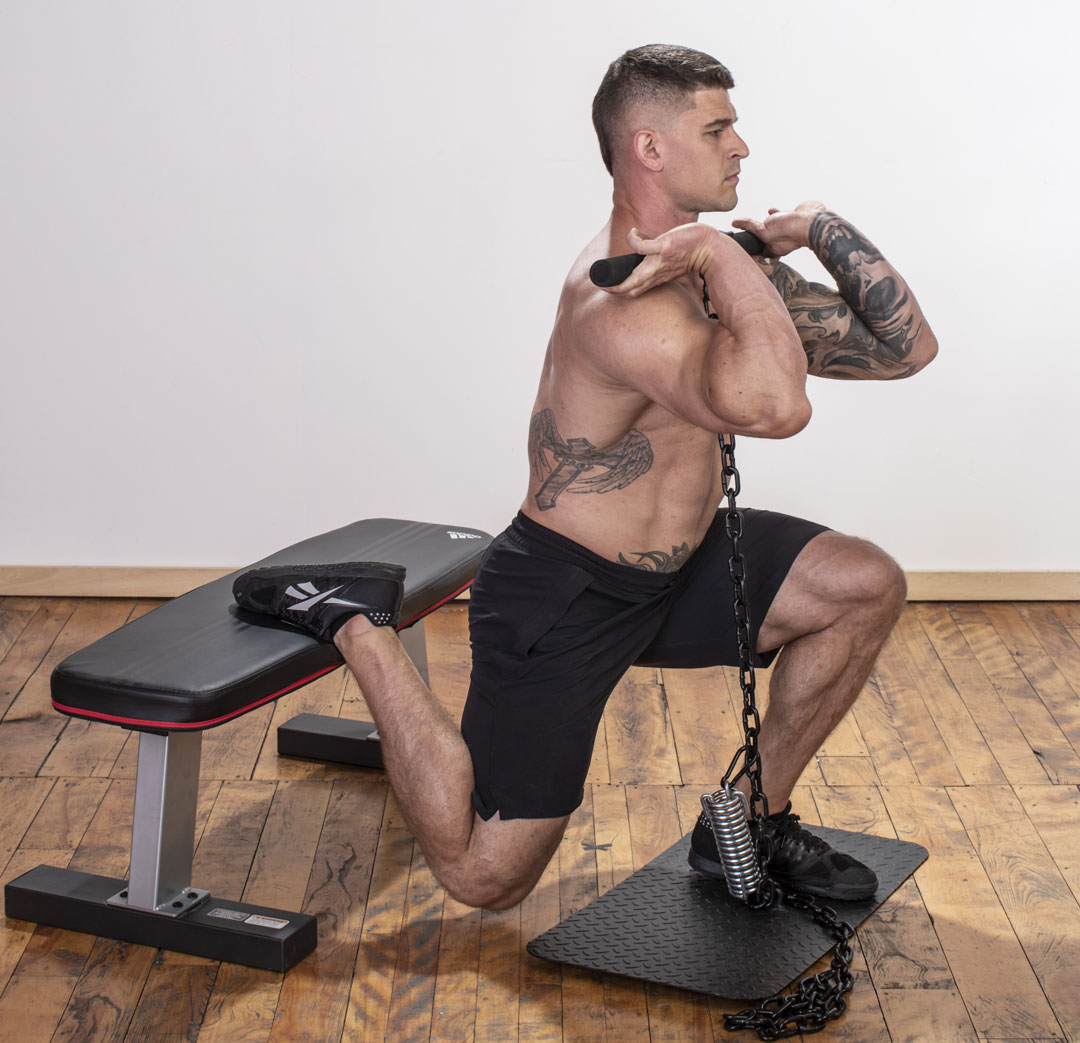
Counter-intuitive as this may seem, experiment proves it to be true. Researchers at the Centre for Rehabilitation and Human Performance Research have shown that isometric training increases speed just as fast as traditional explosives training.[22] Even cooler, this increase doesn’t just translate to simple squat-like jumps, but also to more coordinated speed moves, like combat striking or sprinting.[23]
Additionally, if you want to be fast as hell, your body has to be able to handle torque; isometrics amplify this ability, whereas many other types of speed training don’t. Isos are also better for the joints than other forms of explosives training.[24]
8. You’ll recover like Wolverine
You recover faster from isometrics than conventional pick-it-up-put-it-down lifting styles. Much faster. While a hard barbell session can leave you exhausted for days, athletes can recover fully from super-heavy isometrics in a matter of minutes—and get on with their day, or move to a different sport.[25]
Some of this has to do with muscle energetics: isometrics don’t heat up the interior of muscles or burn through chemical resources anywhere near as fast as regular training—a weird biological phenomenon called the Fenn Effect.[26]
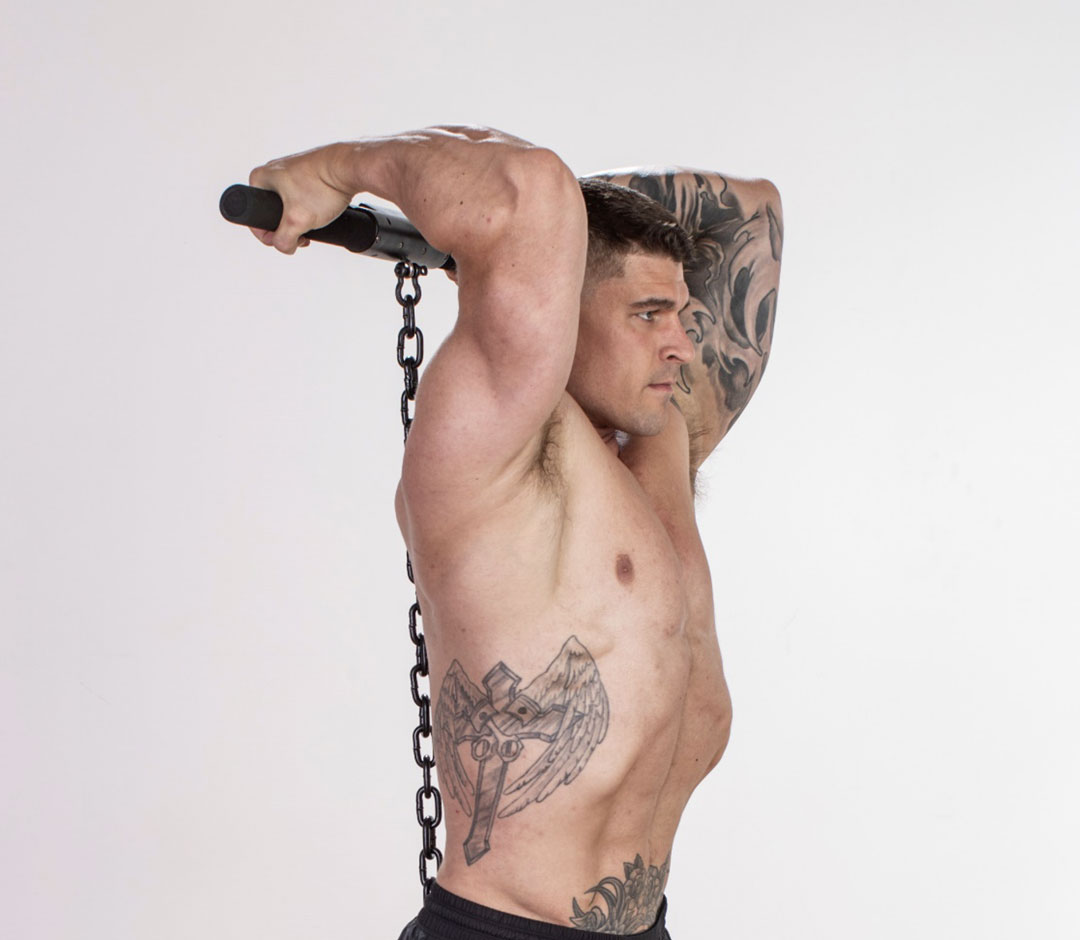
Even better, once you have some basic conditioning under your belt, isometrics—even with loads far greater than those used in the gym—barely leave you sore at all. The next-day aches and stiffness just aren’t there. This is because the Delayed-Onset Muscle Soreness (DOMS) we all know and love so much is caused by microtrauma to muscle architecture when the muscles lengthen eccentrically under load (a.k.a. Popping Sarcomere Theory). In isometric training, the muscles are static under load—zero lengthening equals minimal damage and negligible soreness.[27]
No pain, all gain, baby.
9. Isos are quick, efficient, and convenient
Isometrics are the most efficient form of resistance training known to man. Some of this, again, is just math—with no wasted "easy" portions of a rep, isometric holds are significantly more time-effective than conventional sets-and-reps training. According to the legendary Soviet strength scientist, Yuri Verkhoshansky, the ideal productive isometric strength session should be completed in approximately ten minutes![28]
What’s ten minutes to you, boys and girls? Really?
A full and productive isometrics session can be completed in less time than many athletes spend foam rolling as part of their warm up. Think about that.
In his classic book
Physiology of Muscular Activity, sports ideologist P. V. Karpovich made the following observation on the startling results of isometric strength training:[29]
It is hard to accept these reports, because they apparently contradict everyday experience. Just think about musclemen working one to two hours per day for at least three days per week in order to develop strength. Maybe they are just wasting their time. Maybe!
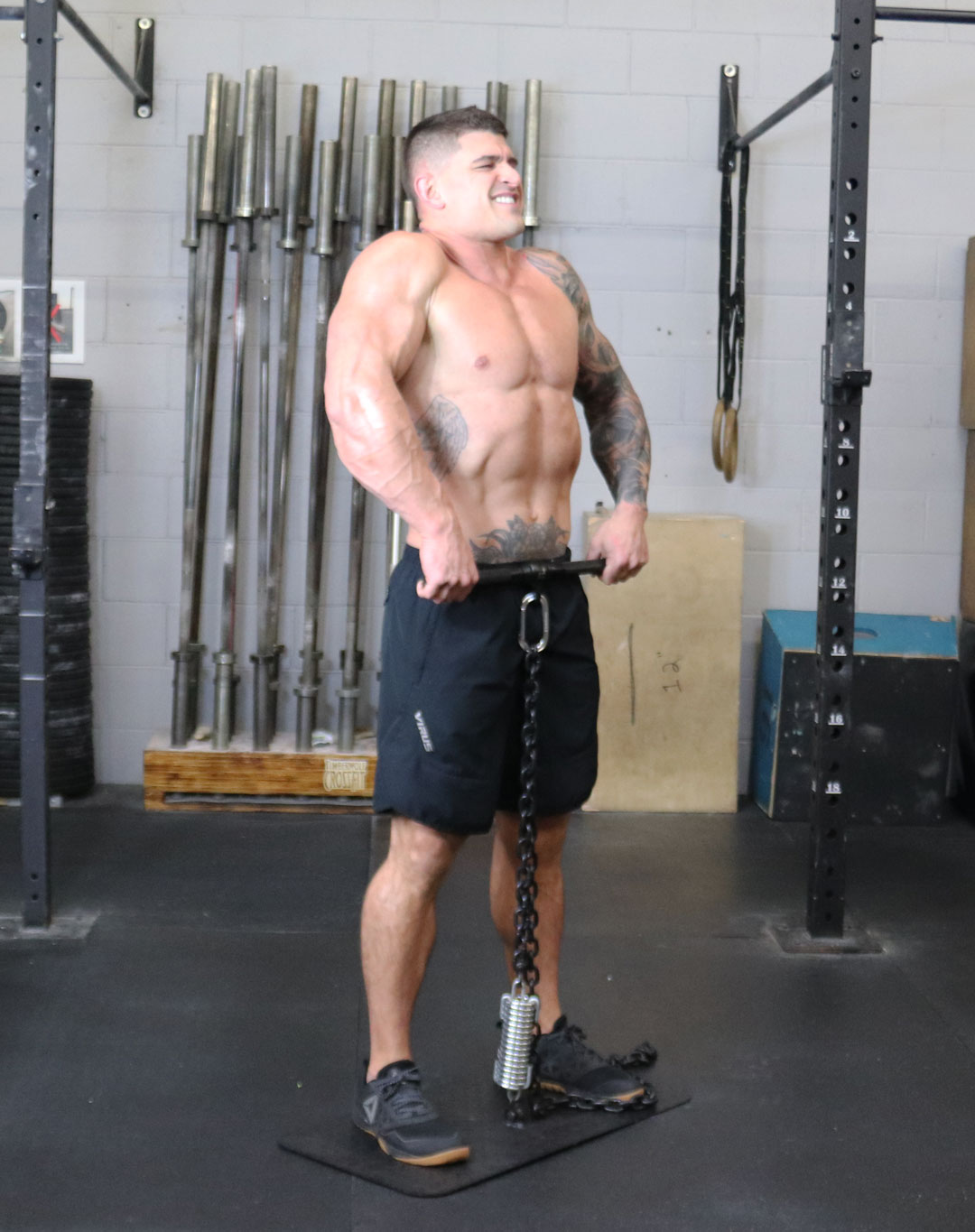
Add to these facts that isometric chain training can be done at home, and you’ve got a "super method" of strength-and-muscle building that doesn’t leave you tired or sore, doesn’t interfere with other sports or disciplines, and can be completed in just a few minutes.
…Seriously, why aren’t you doing this?!
10. Isometrics are simple and elegant
Have I whetted your appetite for some isometric chain training yet? You want to get started? Terrific—I knew you were a brainy kid from the moment I saw ya!
Despite all the cutting-edge research behind it, isometrics ain’t rocket science—in my opinion, they are the simplest and most elegant form of training. Here are some tactics to get you in the gains-zone:
- Pick 5-8 exercises, covering the entire body; go for big, compound brutes like front squats, deadlifts, rows, shrugs, curls, presses, etc.
- Don’t worry about which angle you choose for a lift (high, medium, low). You’ll want to change it every 6-8 weeks anyway.
- Warm up well, and smoothly build force in each repetition. (This is called "attack time".) Don’t just jerk at the bar and expect maximal muscle recruitment.
- During your reps, breathe smoothly and regularly, behind a braced midsection; never hold your breath during isometrics, and consciously avoid the "Valsalva maneuver" while you train.
- Once you’re pushing/pulling as hard as possible, hold that for six seconds. Perform six sets of six holds.
- Rest for a few seconds between sets, shaking your muscles loose.
- Finish each session with a brief relaxation/flexibility session to help dissipate excess tension from the muscles and soft tissues.
- Train 3-7 times per week.
- Measure progress every two months or so by testing your strength on basic barbell exercises. (Alternately if you have an ISOCHAIN, just increase your Target Force on the console by 5k/10lbs, and beat your performance next time.)
One final isometric hack for ya—and this is simple but absolutely indispensable for long-term gains.
Isometric training will get you stronger very fast. This is a good thing, but a corollary of this is that accommodation occurs sooner than with less efficient methods. If you want to make continual progress, side-step this problem exactly as you would with conventional lifting—switch up your training every 6-8 weeks. Apply:
- Different isometric exercises (there are hundreds)
- Different training angles (change up or down by at least 20 degrees)
- Different length of holds
- Different intra-set rest periods
- Different volume: more or less sets
- Different frequency: more or less training sessions
If you make these changes, the progress will keep coming. The Law of Diminishing Returns means it will slow down eventually—the same is true for all training methods—but don’t sweat it. By that time you’ll be bending steel bars and breaking handcuffs, kid.
![]()
The ultimate system?
Is there an "ultimate" strength and muscle-building method? I for one am not nearly smart enough to know the answer. But if such a system does exist, given the scientifically-proven benefits of heavy isometrics, it’s definitely a contender.
Does this mean you should throw away your barbells, dumbbells and kettlebells?
Hell no! These are tried-and-tested strength tools, and are all-round awesome for a number of reasons. I’m just saying that if you have an open mind, there’s another strength and conditioning tool out here waiting for you:
and it’s one of the best on the planet.
…Why not use it?
Thanks to John Du Cane for the terrific images, and Matt Schifferle for the cool title. (
https://reddeltaproject.com/)
Thanks also to our incredible model, Bob Durant:
@BDstrength
REFERENCES:
- Jones & Rutherford (1987). Human muscle strength training: the effects of three different regimens and the nature of the resultant changes. The Journal of Physiology, 391:1-11.
- Folland, et al. (2005). Strength training: isometric training at a range of joint angles versus dynamic training. Journal of Sports Sciences, 23(8):817-24.
- Wilkie (1949). The relation between force and velocity in human muscle. The Journal of Physiology, 110: 249-280.
- Babault, et al. (2001). Activation of human quadriceps femoris during isometric, concentric, and eccentric contractions. Journal of Applied Physiology, 91(6):2628-34.
- Hettinger & Muller (1953). Muscle capacity and muscle training. Arbeitsphsyiologie, 15(2):111-26.
- Lum & Barbosa (2018). Application of Isometric Strength Training for Enhancing Sports Related Dynamic Performance. International Conference of Strength Training 2018.
- Jaskoviak & Schafer (1986). Applied Physiotherapy.
- Rio, et al. (2015). Isometric exercise induces analgesia and reduces inhibition in patellar tendinopathy. British Journal of Sports Medicine, 49(19):1277-83.
- Bolotin & Bakayev (2016). Efficacy of using isometric exercises to prevent basketball injuries. Journal of Physical Education and Sport, 16(4):1177-1185.
- Garg & Chaffin (1975). A biomechanical computerized simulation of human strength. AIIE Transactions, 7(1), 1-15.
- Raitsin (1974). The effectiveness of isometric and electro-stimulated training on muscle strength at different joint angles. Theory and Practice of Physical Culture, 12, 33-35.
- Knapik, et al. (1983). Angular Specificity and Test Mode Specificity of Isometric and lsokinetic Strength Training. The Journal of Orthopaedic and Sports Physical Therapy, 1983;5(2):58-65.
- Bandy & Hanten (1993). Changes in torque and electromyographic activity of the quadriceps femoris muscles following isometric training. Physical Therapy, 73(7):455-65.
- Rosentswieg & Hinson (1972). Comparison of isometric, isotonic, and isokinetic exercises by electromyography. Archives of Physical Medicine and Rehabilitation. 53(6), 249-252.
- Owen, et al. (2010). Effect of isometric exercise on resting blood pressure: a meta-analysis. Journal of Human Hypertension, 24(12):796-800.
- Wiley, et al. (1992). Isometric exercise training lowers resting blood pressure. Medicine and Science in Sports and Exercise, 24(7):749-54.
- Devereux, et al. (2010). Reductions in resting blood pressure after 4 weeks of isometric exercise training. European Journal of Applied Physiology, 109(4):601-6.
- Garg, et al. (2014). Effect of Isometric Handgrip Exercise Training on Resting Blood Pressure in Normal Healthy Adults. Journal of Clinical and Diagnostic Research, 8(9): BC08–BC10.
- Sandhu, et al. (2014). Effect of Isometric Handgrip Training on Heart Rate and Arterial Pressure in Normotensive Individuals. Scholars Journal of Applied Medical Sciences, 2, 2010-2015.
- Hess & Smart (2017). Isometric Exercise Training for Managing Vascular Risk Factors in Mild Cognitive Impairment and Alzheimer’s Disease. Frontiers in Aging Neuroscience, 9: 48.
- Petrofsky, et al. (2007). Muscle Strength Training and Weight Loss from a Combined Isometric Exercise and Dietary Program. Journal of Applied Research, 7(1).
- Burgess, et al. (2007). Plyometric vs. isometric training influences on tendon properties and muscle output. Journal of Strength and Conditioning Research, 21(3):986-9.
- Lum & Barbosa (2018). Application of Isometric Strength Training for Enhancing Sports Related Dynamic Performance. International Conference of Strength Training 2018.
- Burgess, et al. (2007). Plyometric vs. isometric training influences on tendon properties and muscle output. Journal of Strength and Conditioning Research, 21(3):986-9.
- Clarke & Stull (1969). Strength recovery patterns following isometric and isotonic exercise. Journal of Motor Behavior, 1(3):233-43.
- Fenn (1924). The relation between the work performed and the energy liberated in muscular contraction. Journal of Physiology, 58 373-395.
- Jones, et al. (1989). Mechanical influences on long-lasting human muscle fatigue and delayed-onset pain. The Journal of Physiology, 412: 415–427.
- Verkhoshansky & Siff (2009). Supertraining, chapter 4.2.4 (6th Edition).
- Karpovich, (1959). Physiology of Muscular Activity.
Back